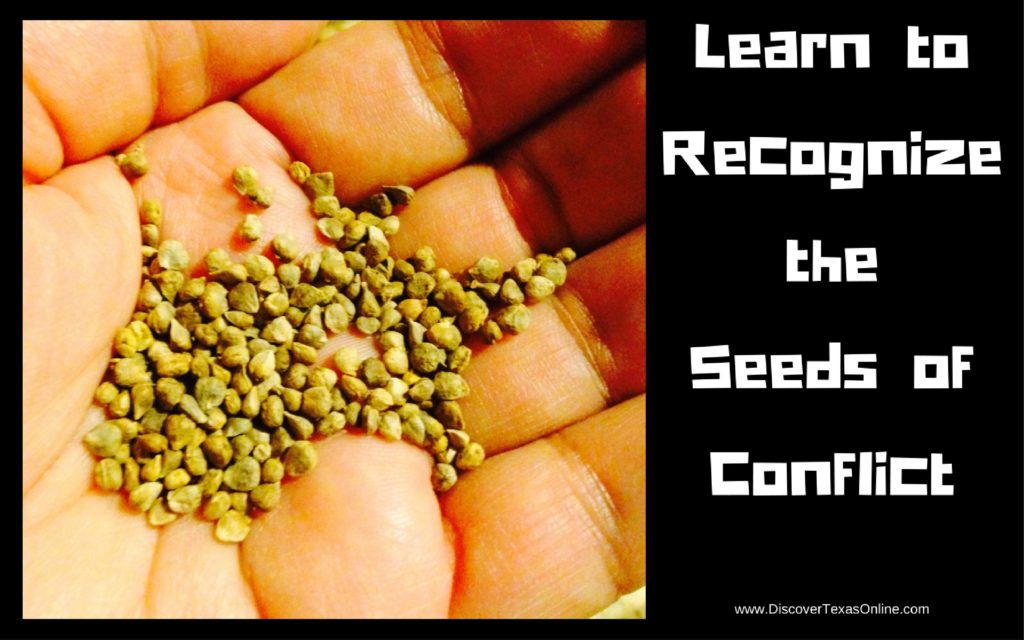 In the last post, I issued a challenge to be on the lookout for the first signs of Texas bluebonnets.
In the last post, I issued a challenge to be on the lookout for the first signs of Texas bluebonnets.
Today, I’d like to challenge you to look for another type of “first signs”–the first signs of conflict.
- The Texas rebellion didn’t come to a head until March-April 1836, but six years earlier (April 6, 1830) Mexico passed a law banning further immigration from the United States for all the reasons we discussed here. The ban on Anglo immigration was one of the first seeds of conflict.
- The Civil War did not begin until 1861, but the issues of slavery and states’ rights had been debated for years. The seeds of conflict existed at the founding of our country, and the framers of our Constitution hoped that they’d lay dormant until the issue could be solved peacefully. The Great Revival played a major role in bringing about a peaceful end to human trafficking in England, but our course was different. Just as the institution of slavery was waning, Eli Whitney’s invention of the cotton gin (intended, some say, to replace human workers) sparked a frenzy of slave buying to supply larger plantations. The invention of the cotton gin planted fresh seeds of conflict.
The seeds of conflict often take root long before controversy bears fruit.
As that fruit is growing, we can make choices to affect the discord that’s been sown.
Sometimes we have the choice to plant different seeds.
- The United Nations recently voted on several controversial issues.
- This month our state and our country will seat new representatives.
- Our nation will inaugurate a new president.
Look for the early signs of conflict and discuss with your children ways–both wise and foolish–to deal with disagreements between people.


